High Capacity Meat Slicer Machine For Commercial Use
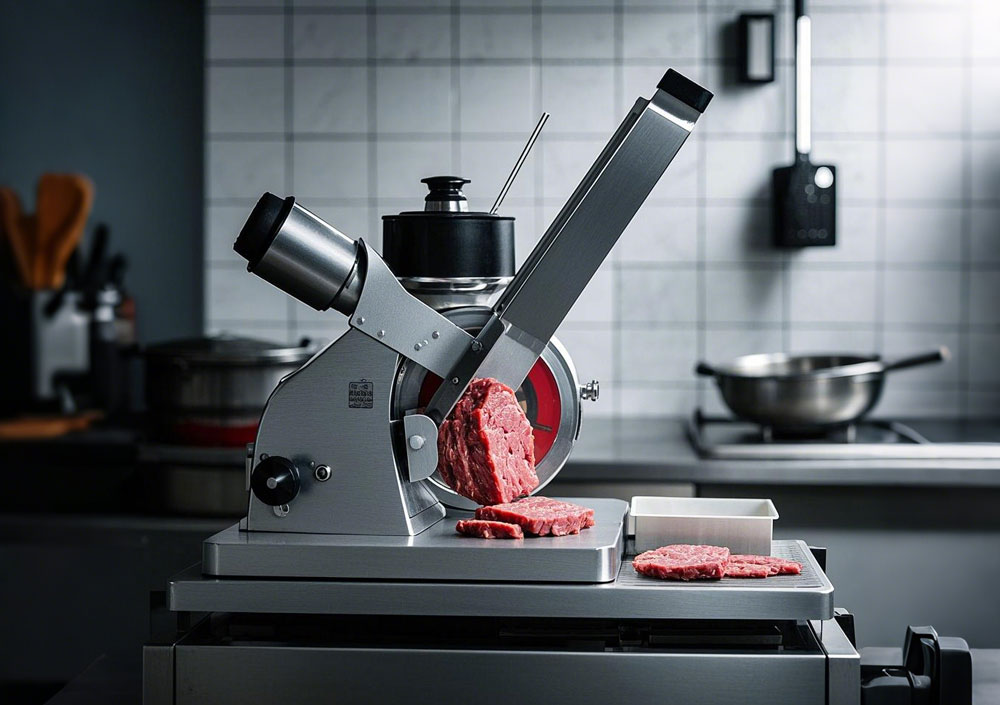
When it comes to the meat processing industry, efficiency and precision are paramount. A high capacity meat slicer machine is an essential tool for businesses looking to optimize their operations, meet rising demand, and enhance product quality. In this guide, we’ll dive deep into why these machines matter for your business and how they can help streamline your meat slicing processes.
Unlocking Efficiency in Meat Processing
High capacity meat slicers are designed to handle large volumes of meat in a short amount of time, offering businesses significant gains in efficiency. By reducing labor costs and increasing output, these machines can help streamline your production line, meet customer demands faster, and reduce the overall cost per unit of product.
The Growing Demand for High-Capacity Slicing Solutions
With the growing demand for ready-to-eat and pre-packaged meat products, businesses are under pressure to maintain high production rates without sacrificing quality. High-capacity slicers allow meat processors to slice large quantities of meat quickly and consistently, helping businesses meet market demands while maintaining superior standards of quality.
Key Benefits of Using a High Capacity Meat Slicer in Commercial Settings
- Increased production efficiency
- Enhanced consistency and quality
- Reduction in labor costs
Compliance with hygiene and safety standards
Related Products:Meat Slicer Machine
What Makes a Meat Slicer High Capacity?
Understanding Capacity: Pounds Per Hour vs. Units Per Hour
When evaluating high-capacity slicers, it's essential to understand how their capacity is measured. Some slicers are rated based on the number of pounds of meat they can slice per hour, while others are rated by the number of units or portions they can process. Knowing this distinction helps you choose the right slicer for your operational needs.
Heavy Duty Construction for Maximum Output
High-capacity slicers are built with robust construction materials, including durable stainless steel frames and heavy-duty motors, ensuring that they can handle continuous high-volume operations without compromising on performance or reliability.
Size and Power: The Backbone of High Capacity Models
The size and motor power of a slicer play a critical role in determining its capacity. Larger machines with more powerful motors can slice larger portions of meat more quickly, making them ideal for high-output commercial environments.
How High Capacity Meat Slicer Machines Work
The Mechanism Behind High Performance
High-capacity slicers are equipped with powerful motors and advanced cutting mechanisms, which work in tandem to slice meat into consistent portions. The machine’s motor drives the blades, which are designed to maintain sharpness and precision even under heavy use.
Blades and Motors: The Heart of the Slicing Process
The combination of high-quality blades and powerful motors allows high-capacity slicers to produce precise and consistent cuts. Blade sharpness is crucial for smooth operation, while a strong motor ensures that the slicer can handle large volumes without overheating.
Manual vs. Automatic: What’s Right for Your Needs?
Manual slicers require the operator to feed the meat into the machine, while automatic slicers use an automatic feeding system to process meat more efficiently. Automatic slicers are ideal for businesses that need high-volume output and want to minimize the manual labor involved in the slicing process.
Types of High Capacity Meat Slicer Machines
Vertical Meat Slicers for Larger Cuts
Vertical meat slicers are typically used for cutting larger cuts of meat, such as roasts and hams. They are perfect for high-volume operations where large portions of meat need to be sliced quickly and consistently.
Horizontal Meat Slicers for Precise, Thin Slices
Horizontal slicers are designed for creating precise, thin slices, making them ideal for deli meats and other fine cuts. They provide flexibility for businesses that require various thicknesses for their meat products.
Dual Blade Systems for Multi-Cut Efficiency
Dual blade systems are designed for high-volume operations that require multi-cut efficiency. By using two blades at once, these systems can double the slicing capacity, allowing businesses to process larger volumes of meat in less time.
Gravity Feed vs. Manual Feed Machines: Which One to Choose?
Gravity feed machines automatically move the meat towards the blades, offering a more hands-off operation, while manual feed machines require the operator to position the meat manually. Gravity feed machines are often preferred for high-volume settings, as they reduce the need for constant supervision.
Key Features to Look for in a High Capacity Meat Slicer
Blade Size and Sharpness for Precision Cuts
The size and sharpness of the blade are critical for producing clean, consistent slices. Larger blades with superior edge retention ensure that the slicer can handle tough cuts of meat while maintaining precision.
Adjustable Thickness Settings for Versatile Cuts
High-capacity slicers come with adjustable thickness settings, allowing operators to change the thickness of the slices depending on the product. This feature provides versatility and enables businesses to create a wide range of meat products.
Heavy-Duty Motors for Consistent Performance
Heavy-duty motors are essential for maintaining consistent slicing performance, especially in high-volume settings. A powerful motor ensures that the slicer can process large quantities of meat without overloading or overheating.
Built-In Safety Features: Why They Matter
Safety features such as blade guards, emergency stop buttons, and non-slip feet help protect operators from potential accidents. A high-capacity slicer should have advanced safety measures to prevent injuries while in use.
Easy-to-Clean Designs to Ensure Hygiene
Commercial kitchens require high levels of hygiene, and easy-to-clean slicers play a vital role in preventing contamination. Stainless steel construction and removable parts make cleaning and sanitizing the machine easier, reducing the risk of foodborne illnesses.
Stainless Steel Construction: Durability and Longevity
Stainless steel is the material of choice for high-capacity slicers due to its durability, resistance to rust, and ease of cleaning. A stainless steel slicer ensures a long lifespan and is better equipped to withstand the rigors of a commercial kitchen environment.
The Role of a High Capacity Meat Slicer in Commercial Kitchens
Speeding Up Production for High-Volume Operations
In high-volume commercial kitchens, time is money. A high-capacity slicer speeds up production, ensuring that meat is sliced quickly and efficiently to meet customer demands without delay.
Enhancing Consistency and Quality in Meat Products
Consistency in slicing directly affects product quality. High-capacity slicers produce uniform slices, which enhances the appearance and texture of meat products, making them more attractive to customers.
Reducing Labor Costs and Improving Efficiency
Automating the slicing process with a high-capacity slicer reduces the need for manual labor, which cuts down on staffing costs. Furthermore, the improved efficiency allows businesses to allocate resources to other areas of the operation.
Meeting Health and Safety Standards with Modern Technology
Modern slicers are designed to meet strict health and safety standards, including hygiene regulations. Features like self-lubricating parts and easy-to-remove blades contribute to better sanitation practices and ensure compliance with food safety laws.
Choosing the Right High Capacity Meat Slicer for Your Business
Assessing Your Business Needs: How Much Meat Do You Process Daily?
Before choosing a high-capacity slicer, assess how much meat your business processes daily. The amount of meat you need to slice will determine the size and power of the slicer you should invest in.
Space Considerations: Finding the Right Size Machine for Your Facility
Space is a valuable commodity in any commercial kitchen, so ensure that the slicer fits comfortably without overcrowding your workspace. Consider both the slicer’s footprint and the necessary clearance for safe operation.
Budget vs. Quality: Balancing Cost and Durability
While high-capacity slicers represent a significant investment, they can deliver excellent returns. Choose a model that balances affordability with the durability and features you need for long-term success.
Reliability and Brand Reputation: Choosing a Trusted Manufacturer
It’s important to choose a trusted manufacturer with a proven track record. Reliability and performance should always outweigh the price, as a high-quality slicer will save you money in the long run through reduced downtime and maintenance costs.
Top Brands in High Capacity Meat Slicers
Leading Industry Names You Can Trust
Some of the most trusted brands in the high-capacity meat slicer market include Hobart, Berkel, and Fleetwood. These companies are known for their durable, high-performance slicers that can withstand the demands of commercial kitchens.
What Sets These Brands Apart in Terms of Technology and Performance
Top brands are known for incorporating advanced technology into their slicers, offering features such as variable speed controls, improved safety measures, and energy-efficient motors.
Customer Reviews and Testimonials: Real-Life Experiences
Customer reviews and testimonials are an invaluable resource when selecting a slicer. Many businesses share their experiences with specific models, providing insights into performance, reliability, and ease of use.
Maintenance Tips for Keeping Your High Capacity Meat Slicer in Top Shape
Routine Cleaning and Sanitizing for Longevity
Regular cleaning is essential to keep your slicer operating efficiently. Follow the manufacturer’s instructions for cleaning the machine after each use to avoid build-up of bacteria and meat residue.
Blade Sharpening: How Often Should It Be Done?
To maintain optimal slicing performance, the blades should be sharpened regularly. The frequency of sharpening depends on how often the slicer is used, but it’s essential to keep the blades sharp for clean, precise cuts.
Troubleshooting Common Issues with High Capacity Slicers
Common issues such as inconsistent slicing, motor overheating, or difficulty feeding the meat through the slicer can often be resolved through routine maintenance or small adjustments.
Professional Maintenance vs. DIY Care
While some basic maintenance can be done by your team, professional servicing is recommended for complex issues to ensure your slicer remains in top condition.
How High Capacity Meat Slicers Improve Product Quality
Achieving Perfectly Even Slices Every Time
High-capacity slicers ensure that meat is sliced evenly, which improves the presentation and texture of the product, making it more appealing to customers.
How Slicing Affects the Taste and Presentation of Meat Products
Even, consistent slicing not only enhances the aesthetic quality of meat products but also affects their texture and taste, ensuring that customers receive the highest quality products every time.
Minimizing Waste and Maximizing Yield with Precision Slicing
Precision slicing reduces waste by maximizing the yield from each cut of meat, helping businesses get more out of their raw materials and increasing profitability.
Energy Efficiency in High Capacity Meat Slicers
How Modern Slicers Save Energy Without Sacrificing Performance
Modern high-capacity slicers are designed with energy-efficient motors that reduce power consumption without compromising on performance. These machines help reduce operational costs in the long run.
Features That Contribute to Energy Conservation
Energy-saving features such as automatic shut-off, low power modes, and variable-speed motors all contribute to a more efficient operation that saves on energy costs.
Long-Term Savings on Utility Costs
By investing in an energy-efficient slicer, businesses can see substantial savings on electricity bills, further improving the overall cost-effectiveness of the operation.
Safety Considerations When Using a High Capacity Meat Slicer
Key Safety Features to Look For in High Capacity Slicers
Look for slicers that are equipped with safety guards, emergency stops, and automatic shut-off systems to ensure the safety of operators during use.
Training Employees on Safe Meat Slicing Practices
Proper employee training is crucial to ensure that meat slicers are used safely. Staff should be familiar with safety features and emergency procedures to minimize risks.
Protecting Operators from Injuries and Accidents
High-capacity slicers are designed with built-in safety measures, but ongoing vigilance and employee training are key to preventing accidents in busy commercial kitchens.
How High Capacity Meat Slicers Are Revolutionizing the Food Service Industry
Streamlining Operations in Delis, Butcher Shops, and Supermarkets
High-capacity slicers are transforming food service operations by increasing speed, reducing labor requirements, and improving product consistency. These machines are making life easier for delis, butcher shops, and supermarkets.
Reducing Labor Costs While Improving Speed and Precision
By automating the slicing process, businesses can reduce their labor costs and improve the speed and accuracy of meat slicing, ultimately increasing their bottom line.
Supporting the Demand for Pre-Packaged, Pre-Sliced Products
As consumer demand for convenience foods grows, high-capacity slicers enable businesses to meet the increasing demand for pre-sliced, pre-packaged meat products efficiently.
High Capacity Meat Slicer Machines in Large-Scale Food Processing
Meeting the Needs of Large-Scale Meat Processing Plants
In large-scale meat processing plants, high-capacity slicers are crucial for managing the high volume of meat that must be processed each day. They help keep production lines moving smoothly and efficiently.
Managing Consistency and Volume in Mass Production
High-capacity slicers are designed to handle both the volume and consistency required in mass production. By providing uniform cuts, these machines ensure that every batch meets the same quality standards.
Integrating Meat Slicers with Other Processing Equipment
In large-scale operations, slicers are often integrated with other meat processing equipment, such as grinders, mixers, and packagers, to create a seamless production process that maximizes output and minimizes labor costs.
Understanding the Costs of High Capacity Meat Slicer Machines
Initial Investment vs. Long-Term Savings
While high-capacity slicers can require a significant initial investment, the long-term savings they provide in terms of reduced labor, improved efficiency, and enhanced product quality make them a worthwhile investment.
Comparing Costs of Different Models and Brands
When selecting a slicer, it’s important to compare different models and brands to find the best balance between cost, durability, and functionality. Higher-end models may have more advanced features, but they come with a higher price tag.
Total Cost of Ownership: Maintenance, Repairs, and Energy Usage
The total cost of ownership includes not just the purchase price, but also ongoing costs for maintenance, repairs, and energy consumption. A more durable, energy-efficient model may cost more upfront but save money in the long run.
Customization Options for High Capacity Meat Slicer Machines
Tailoring Your Meat Slicer to Your Specific Needs
Some high-capacity slicers offer customization options, such as adjustable blades, specialized feed systems, or custom cutting configurations. Tailoring the slicer to your specific needs can improve your operational efficiency.
Custom Blades, Feeds, and Cutting Configurations
Custom blades and feeds can enhance the versatility of your slicer, allowing it to handle various types of meat and cuts. Custom configurations can streamline operations and meet specific slicing needs.
How Custom Features Can Improve Productivity and Efficiency
By tailoring your slicer to your unique requirements, you can achieve higher productivity and greater efficiency. Custom features can enable faster processing and reduce waste, helping to maximize profits.
The Future of High Capacity Meat Slicer Technology
Innovations on the Horizon: What’s Next for Meat Slicing?
As technology continues to evolve, we can expect to see further innovations in meat slicer design, including smart features, automation, and enhanced energy efficiency. These advancements will enable even higher output with greater precision and less waste.
How Smart Technology Is Changing the Way Meat Is Sliced
Smart sensors and real-time monitoring will provide operators with valuable insights into machine performance and efficiency, allowing for better control over the slicing process and proactive maintenance.
Automation and Artificial Intelligence: A Glimpse into the Future
Incorporating artificial intelligence into slicers will make them even more efficient, automating tasks like slicing thickness adjustment and predictive maintenance, reducing human error and downtime.
Common Myths About High Capacity Meat Slicer Machines
Debunking Misconceptions About Size and Power
One common misconception is that larger machines are always better. In fact, many compact slicers offer similar or even superior performance while occupying less space.
Overcoming Fears of Complexity and Maintenance
High-capacity slicers are often seen as complex machines, but modern models are designed with user-friendly features, making maintenance and operation simpler than ever.
The Truth About Safety in High Capacity Meat Slicers
Despite concerns about safety, modern slicers are equipped with advanced safety features, such as blade guards and automatic shut-off systems, to protect operators from accidents.
Frequently Asked Questions (FAQs) About Meat Slicer Machine
What is the difference between a high-capacity meat slicer and a standard meat slicer?
A high-capacity meat slicer is designed for commercial use, capable of slicing large quantities of meat quickly and consistently. Unlike standard models that are more suitable for small-scale operations, high-capacity slicers feature stronger motors, larger blades, and more durable construction to handle high-volume demands. They are typically more efficient, offering faster slicing speeds and better precision, which helps reduce labor costs and improve production efficiency.
How much meat can a high-capacity meat slicer process per hour?
The processing capacity of high-capacity meat slicers varies by model but typically ranges from 500 pounds to over 2000 pounds of meat per hour. The exact capacity depends on the machine's motor power, blade size, and feed mechanism. Choosing the right model depends on your business’s meat processing volume to ensure that the slicer can handle your daily needs without sacrificing speed or quality.
Are high-capacity meat slicers easy to clean and maintain?
Yes, high-capacity meat slicers are designed with hygiene in mind. Many models come with removable parts that can be easily cleaned, such as the blade, carriage, and product tray. Regular cleaning after each use is essential to prevent contamination and ensure long-lasting performance. Blade sharpening and motor maintenance are also necessary but generally require minimal effort if done regularly. For complex issues, professional maintenance is recommended to keep the slicer operating at peak efficiency.
What safety features should I look for in a high-capacity meat slicer?
When choosing a high-capacity meat slicer, look for safety features such as blade guards, emergency stop buttons, and automatic shut-off mechanisms to prevent accidents. Some models also have safety sensors that halt operation if the machine detects irregularities. Operator training is crucial to ensure that safety protocols are followed, including safe handling of the slicer and proper shutdown procedures.
Can high-capacity meat slicers handle different types of meat, including frozen meat?
Yes, many high-capacity slicers are versatile enough to handle various types of meat, including frozen, chilled, or fresh meat. However, not all slicers are suitable for frozen meat; you need to select a model that is designed to handle harder cuts. For example, vertical slicers are better for larger cuts, while horizontal slicers are ideal for producing thin, precise slices, making them ideal for various types of meat.
How do I know if I need a high-capacity meat slicer for my business?
If your business processes a large volume of meat daily and requires consistent, high-quality slices, a high-capacity meat slicer is an excellent investment. Consider the number of cuts you need to make, the speed at which you need to process meat, and the size of your facility. If you're handling high-demand orders for delis, butcher shops, or large-scale meat processing, a high-capacity slicer will significantly improve efficiency and reduce labor costs.
Are there any energy-efficient options for high-capacity meat slicers?
Yes, many modern high-capacity meat slicers are designed with energy efficiency in mind. These machines feature energy-saving motors, automatic shut-off systems, and variable-speed controls to reduce electricity consumption without compromising performance. Investing in an energy-efficient slicer can help you lower your operating costs and reduce your carbon footprint, making it a smart choice for businesses focused on sustainability.
How long do high-capacity meat slicers typically last?
The lifespan of a high-capacity meat slicer depends on the quality of the machine, how often it's used, and how well it is maintained. With proper care, high-quality commercial slicers can last between 10 and 20 years. Regular cleaning, maintenance, and blade sharpening can extend the life of the machine, ensuring that it continues to deliver reliable performance over time.
Conclusion: Is a High Capacity Meat Slicer Right for Your Business?
Investing in a high-capacity meat slicer can significantly improve your business’s efficiency, product consistency, and overall productivity. With advanced features, improved safety, and cost-saving capabilities, these machines are indispensable in commercial meat processing environments.
Must-Read Blogs For Chain Restaurants Owner




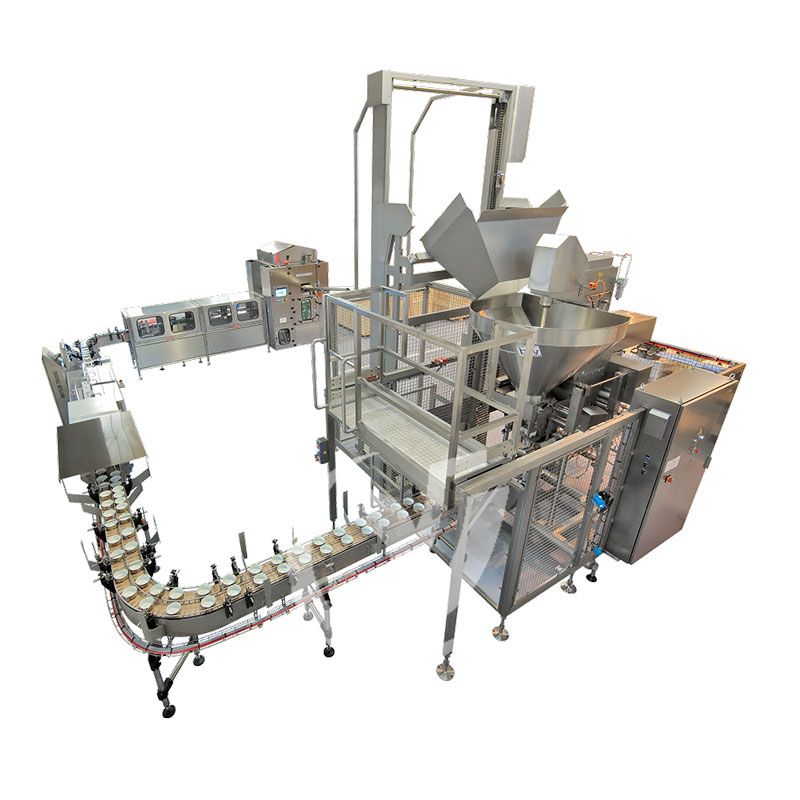


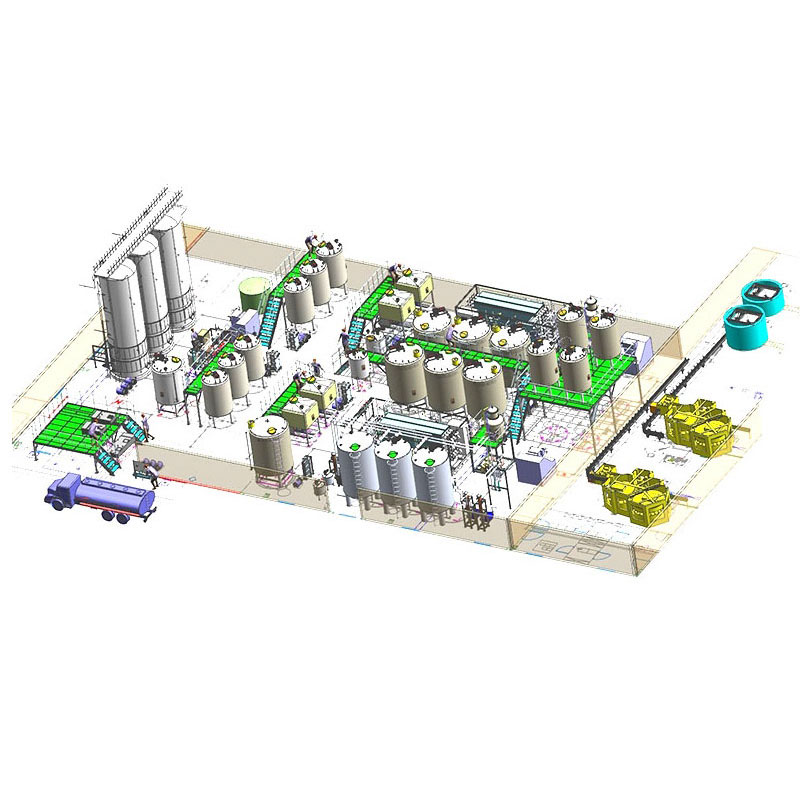



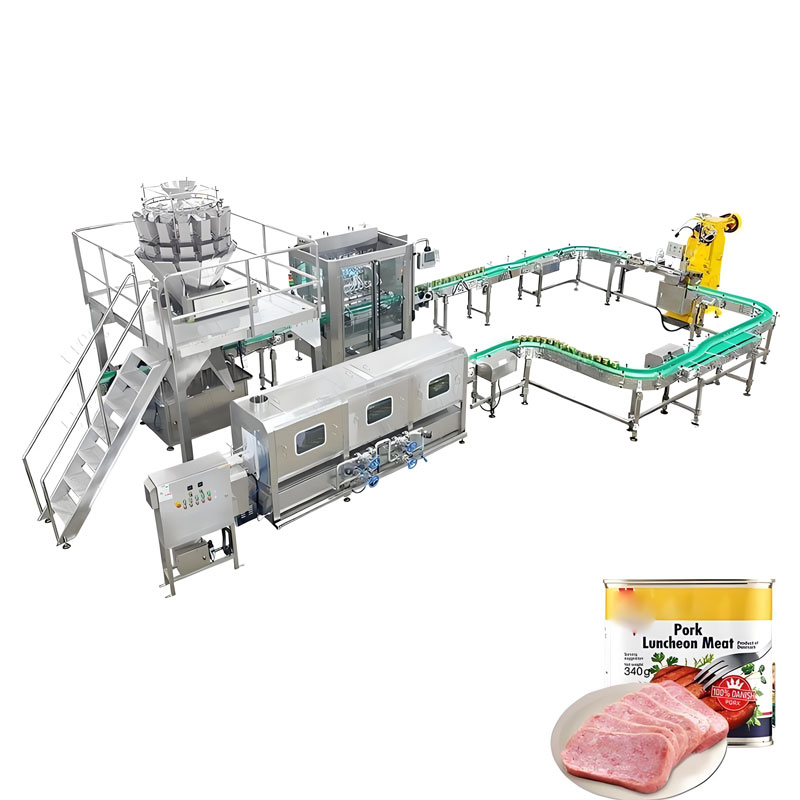 Fully Automatic Meat Can Production Lines
Fully Automatic Meat Can Production Lines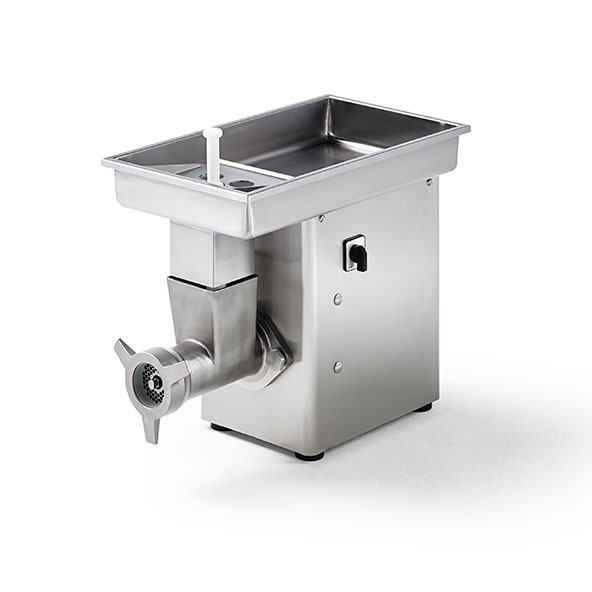 Heavy Duty Commercial Meat Grinder
Heavy Duty Commercial Meat Grinder
Ready to Get Started?